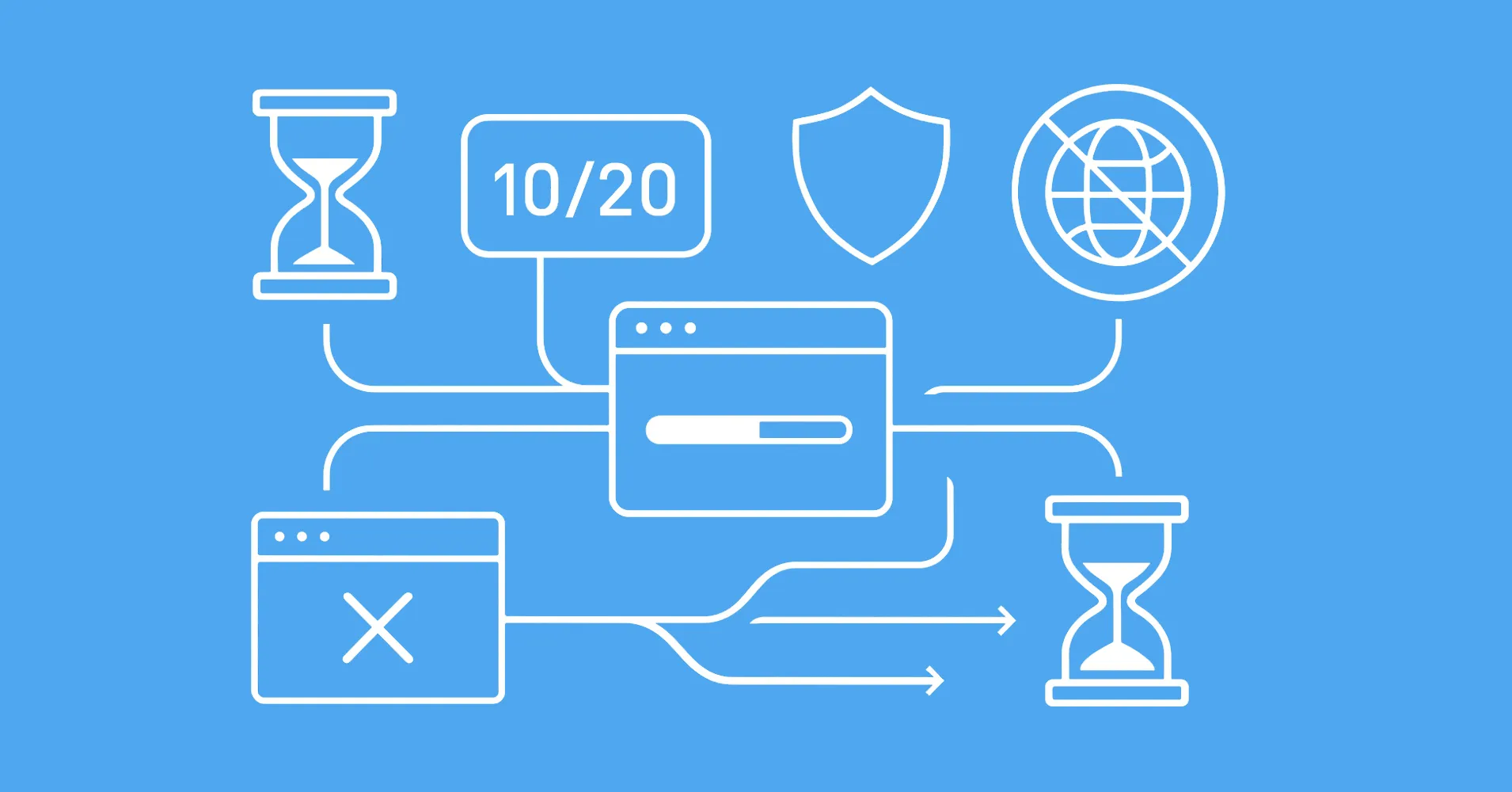
When automating web tasks or scraping data, HTTP errors can disrupt your workflow, and HTTP 409 is no exception. The 409 error signals a conflict with the request you're sending, often caused by improper configuration.
In this article, we'll explain what HTTP 409 means, common causes, and whether it could indicate blocking. We'll also explore how Scrapfly can help you bypass this error.
Key Takeaways
Fix http 409 "Conflict" errors by ensuring request data matches server expectations, updating resource versions, and resolving concurrent modification conflicts to successfully complete web requests and API operations.
- HTTP 409 "Conflict" occurs when server detects a conflict between the request and the current state of the resource
- Common causes include concurrent updates - multiple requests trying to modify the same resource simultaneously
- Version mismatches trigger conflicts - attempting to update a resource with outdated version information
- Resource state conflicts occur - trying to delete resources that are referenced by other active resources
- Client-side fixes involve request alignment - ensure requests match server expectations and use correct HTTP methods
- Server-side solutions require proper handling - implement conflict resolution strategies and proper resource versioning
- Rarely indicates blocking - HTTP 409 is primarily a data integrity mechanism, though GET requests returning 409 may signal blocking
- Web scraping implications - most common with POST/PUT requests that create or update resources, session management issues
What is HTTP Error 409?
409 HTTP code Conflict occurs when the server detects a conflict with the current state of the resource. This often happens when you're attempting to modify data that doesn't align with the server’s expectations or the resource's current state. For example, attempting to update a resource that has been changed or deleted since your last request might trigger a 409 error.
What are HTTP 409 Error Causes?
The most common cause of a 409 error is a conflict between the request and the server’s current data. This error can arise from various scenarios, such as:
- Concurrent Updates: Two requests attempting to modify the same resource simultaneously can cause a conflict.
- Version Mismatch: If the server is expecting a specific version of a resource and the request tries to modify an outdated version, a 409 error may occur.
- Resource State Conflicts: Attempting to delete a resource that is referenced by another active resource could trigger a conflict.
To avoid 409 errors, it's important to ensure your requests are correctly configured and aligned with the server’s current state.
Practical Example
To demonstarte how a server would return a HTTP 409 status code, let's build a simple Flask API with a /register endpoint that accepts POST requests to mimic registering a new user to a database.
from flask import Flask, jsonify, request
app = Flask(__name__)
# Sample data to mimic existing resources
existing_users = ["john_doe", "jane_smith"]
@app.route("/register", methods=["POST"])
def register():
username = request.json.get("username")
if username in existing_users:
# Conflict: Username already exists
return jsonify({"error": "Username already exists."}), 409
# Otherwise, proceed with registration
existing_users.append(username)
return jsonify({"message": "User registered successfully."}), 201
if __name__ == "__main__":
app.run(debug=True)
In the example above, we use an in-memory list to simulate a database of existing users. The /register endpoint receives the username sent by the client in the request body and checks if it already exists in the existing_users list. If the username is already taken, the server returns a 409 error, indicating a conflict between the data provided by the client and the existing resources. If the username is available, it is added to the list of users.
We can test this server with a http client:
import httpx
# Test successful registration
response = httpx.post("http://127.0.0.1:5000/register", json={"username": "new_user"})
print(f"Successful Registration: {response.status_code}, {response.json()}")
# Test failed registration (conflict)
response = httpx.post("http://127.0.0.1:5000/register", json={"username": "john_doe"})
print(f"Failed Registration: {response.status_code}, {response.json()}")
// Test successful registration
fetch("http://127.0.0.1:5000/register", {
method: "POST",
headers: {
"Content-Type": "application/json",
},
body: JSON.stringify({ username: "new_user" }),
})
.then(response => response.json().then(data => console.log("Successful Registration:", response.status, data)))
.catch(error => console.error("Error:", error));
// Test failed registration (conflict)
fetch("http://127.0.0.1:5000/register", {
method: "POST",
headers: {
"Content-Type": "application/json",
},
body: JSON.stringify({ username: "john_doe" }),
})
.then(response => response.json().then(data => console.log("Failed Registration:", response.status, data)))
.catch(error => console.error("Error:", error));
# Test successful registration
curl -X POST http://127.0.0.1:5000/register -H "Content-Type: application/json" -d '{"username": "new_user"}'
# Test failed registration (conflict)
curl -X POST http://127.0.0.1:5000/register -H "Content-Type: application/json" -d '{"username": "john_doe"}'
409 in Web Scraping
HTTP status 409 in web scraping is usually encountered when scraping POST or PUT method requests that create objects or update resources. For example, scraping websites with persistent sessions can yield 409 errors if the session data is outdated or conflicts with the server’s current state.
The 409 error could also mean that the server is blocking your requests due to rate limiting or other restrictions and deliberitely returning a 409 status code to signal that you are not allowed to access the resource. If you're receiving this status code on GET type request then that could be a sign of blocking.
Power Up with Scrapfly
ScrapFly provides web scraping, screenshot, and extraction APIs for data collection at scale.
- Anti-bot protection bypass - scrape web pages without blocking!
- Rotating residential proxies - prevent IP address and geographic blocks.
- JavaScript rendering - scrape dynamic web pages through cloud browsers.
- Full browser automation - control browsers to scroll, input and click on objects.
- Format conversion - scrape as HTML, JSON, Text, or Markdown.
- Python and Typescript SDKs, as well as Scrapy and no-code tool integrations.

It takes Scrapfly several full-time engineers to maintain this system, so you don't have to!
Summary
HTTP 409 errors are typically caused by conflicts between the request and the server's current state, often due to concurrent modifications or outdated resource versions. While blocking is an unlikely cause of 409 errors, it's important to test with proxies to rule out intentional blocking. Scrapfly's automated tools, including ASP and rotating proxies, can help you bypass these issues and keep your scraping tasks on track.






